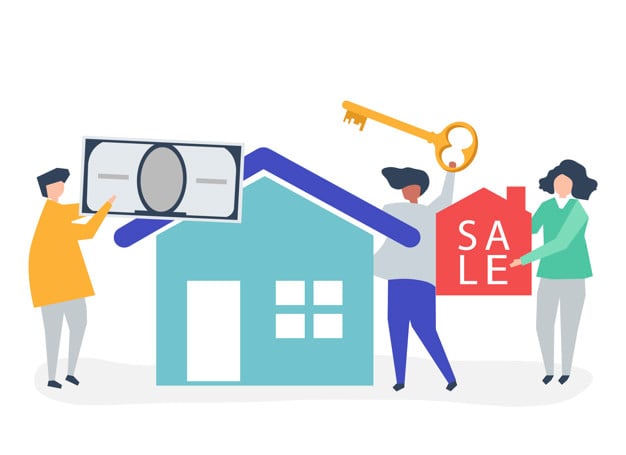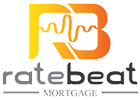
Refinancing
Refinancing your home means obtaining a new mortgage to replace your current mortgage loan. It is common for homeowners to refinance their mortgage to take advantage of lower mortgage payments and interest rates.* When a consumer refinances their existing loan, they may end up paying higher total finance charges over the entire duration of the loan. Some other reasons to refinance are a desire to pay off their loan faster or to use their home equity (the difference between the amount they owe and the value of their home) to pay off credit card debts or make home improvements.
When you refinance you are paying off your old mortgage loan by getting a new one. Therefore, the new loan will have new terms. The lender will need to check out some details and documents to verify if you qualify for a refinance. The basic information that will be checked is your credit score and credit history, income and employment history, and your retirement assets and savings. An appraisal will also be done to affirm the present-day market value of your home. However, you can expect to provide less documentation in comparison to a purchase mortgage.
Types of Refinance Mortgages
There are five types of refinancing options. The refinance type a borrower decides on depends on their individual needs and circumstances.
This is the most common type of refinancing especially in an environment where mortgage rates are low. It is a mortgage loan that is taken to replace the original loan with a new loan that has lower interest rates, mortgage terms or both. For example, you can refinance your ARM (adjustable-rate mortgage) for say a 30-year mortgage for better stability. This is perfect for homeowners’ who are just looking to change their loan programs or lower their monthly payments.
This might be the right loan for you if you require cash and have a lot of home equity. This type of loan helps you to convert your home equity into cash and at the same time lower your interest rate. You can use this to consolidate your debts like credit cards, student loans, or even a dream vacation (without any tax penalty). However, you will have a larger loan amount that can increase your monthly mortgage payments. But, at the same time, you may be able to equalize this increase with a lower interest rate on your new loan.
With cash-in refinancing a homeowner can bring in cash to pay down some portion of the loan to bring it below a threshold, lower the loan to value ratio or for smaller loan payments. A cash-in-refinance helps you to do just that, resulting in a smaller loan with lower monthly mortgage payments.
This type of refinance helps homeowners’ who have negative equity, that is, they owe more on their mortgage than their house is worth. They can borrow about 125% of their home’s value to lower interest rates, reduce their monthly payment or change their loan from an adjustable-rate mortgage to a fixed-rate one. However, the mortgage needs to be guaranteed by Fannie and Freddie, be a current one and tied to a primary residence.
This is a transaction whereby your mortgage lender or bank pays of your present mortgage and replaces it with a new mortgage that has a reduced balance, basically to help you to avoid foreclosure. They are not easy to qualify for but some lenders do offer them as a short sale or foreclosure. However, you need to go over all the options to make sure that it is the right product for you.
Advantages
Lower interest rates:
One of the reasons why people refinance is to reduce interest rates. Getting lower interest rates can lower your monthly payments and big savings over the life of the loan.
Change to a shorter-term
You can refinance into a shorter-term loan. This will help you build equity faster as more of your monthly payments will be applied towards the principal.
Change your loan type from an adjustable-rate to a fixed rate
Switching from a variable-rate loan to a more predictable fixed-rate loan means less stress and worry about the eventual rate and monthly payment increase which can be significant.
Consolidate your debts
Cash-out-refinance helps you turn your home’s equity to consolidate your debts into one single loan. It will also make it easier to keep track of just one payment instead of many and you will be able to save you a lot of money by paying a lower interest rate.
Things To Consider Before Refinancing
Before you decide to refinance you should make sure if it the right choice for you. You should
- Find out if your existing mortgage carries a “prepayment penalty”. Although the amount varies it costs could add up to many months’ of interest payments.
- Determine the costs associated with taking out a new loan. Depending on the program you opt for the costs can include appraisal fees, attorney fees, application fees, insurance, and origination fees. The lender may be able to waive some of these fees, especially if the mortgage was recent. However, the interest savings over the life of the loan may more than make up for these additional costs.
Refinancing does help many homeowners’ to live in their homes for less money, but before you do so reach out to an expert at (877) 877 7575 to understand the options you have and learn about the current mortgage rates.
*By refinancing the consumer’s existing loan, the consumer’s total finance charge may be higher over the life of the loan

